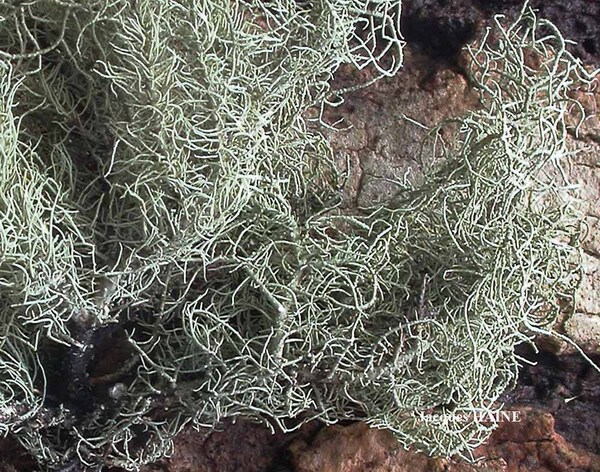Usnea fragilescens Lynge
Hav. ex Lynge, Skr. Vindensk.-Selsk. Christiania, Math.-Naturvidensk. Kl, 7: 230, 1921.
Synonyms:
Distribution: C - Tosc.
Description: Thallus fruticose-filamentous, pale yellowish green with a pellucid appearance, especially when moist, shrubby to subpendulous, 3-6(-9) cm long, branching mainly anisotomic-dichotomously with divergent branches. Main branches 1.5-2 mm thick, usually fusiform, more rarely tapering to irregular, the base black, with sparse and thin annular cracks, lacking everted medullary tissue. Lateral branches constricted at attachment point. Papillae abundant, especially on the main branches, appearing as low subhemispherical bumps, broader than high, rather inapparent; fibrils more or less numerous, usually absent on basal parts of main branches, slender, 2-4 mm long. Soralia numerous on primary and terminal branches, usually widely spaced (15–25/mm2), rarely becoming confluent, circular to ellipsoid in outline, substipitate, flat to slightly concave, with a well-developed corticated margin, occupying more than half the diameter of the branch at maturity, originating from cortex; isidiomorphs often present in young soralia, rare or absent in mature ones, to 0.3 mm long. Cortex shiny in longitudinal section, thin (3.5-6.5% of total branch thickness); medulla white, heterogeneous, with a thin compact layer below the cortex or homogeneous, loose, thick (28-38%); central axis white, thin (16-33%); ratio axis/medulla ranging between 0.4 and 1. Apothecia rare, lecanorine. Asci 8-spored, Lecanora-type. Ascospores 1-celled, hyaline, ellipsoid. Photobiont chlorococcoid. Spot tests: cortex K-, C-, KC-, P-; medulla K+ yellow slowly turning orange-red, C-, KC-, P+ deep orange-red. Chemistry: cortex with usnic acid; medulla with stictic, menegazziaic and sometimes cryptostictic, norstictic and/or constictic acids.
Note: a mainly subatlantic species in Europe, growing on siliceous rocks and acid bark in sites with high air humidity. The only record from Italy (Tuscany), by Sbarbaro, may be due to a misidentification (see Nimis 1993: 730).
Growth form: Fruticose filamentous
Substrata: bark and rocks
Photobiont: green algae other than Trentepohlia
Reproductive strategy: mainly asexual, by soredia, or soredia-like structures (e.g. blastidia)
Restricted to humid-warm, oceanic areas
Commonnes-rarity: (info)
Alpine belt: absent
Subalpine belt: absent
Oromediterranean belt: absent
Montane belt: very rare
Submediterranean belt: absent
Padanian area: absent
Humid submediterranean belt: very rare
Humid mediterranean belt: absent
Dry mediterranean belt: absent
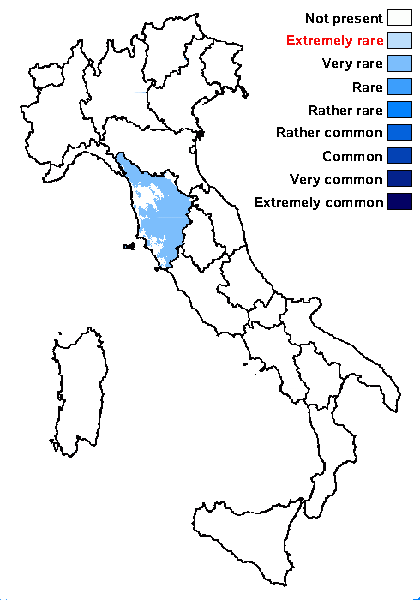
Predictive model
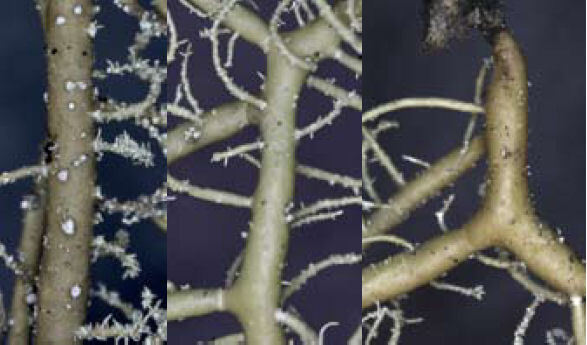
Tiiu Tõrra; Owner: Tiiu Tõrra - Institute of Ecology and Earth Sciences, University of Tartu, Estonia


P.L. Nimis; Owner: Department of Life Sciences, University of Trieste
Herbarium: TSB (35085)
2002/06/06
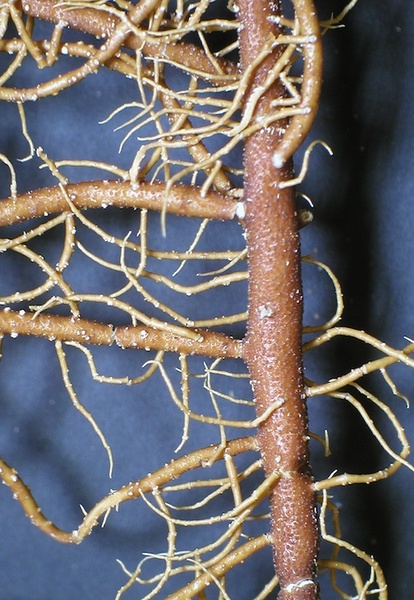
Tiiu Tõrra; Owner: Tiiu Tõrra - Institute of Ecology and Earth Sciences, University of Tartu, Estonia

Jacques Haine - Source: http://www.lichensmaritimes.org/index.php?task=fiche&lichen=619&lang=en
France, Langres
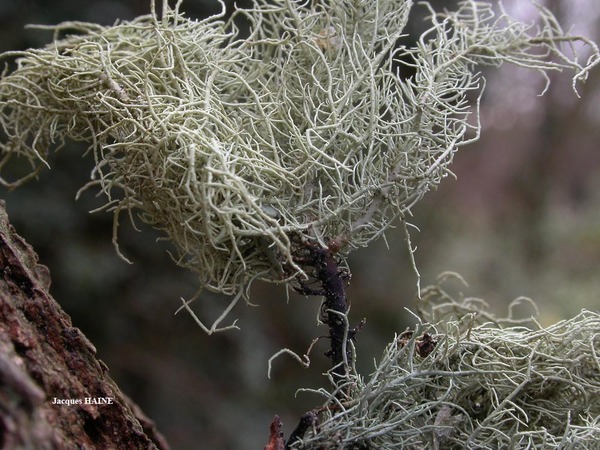
Jacques Haine - Source: http://www.lichensmaritimes.org/index.php?task=fiche&lichen=619&lang=en
France, Langres
Growth form: Fruticose filamentous
Substrata: bark and rocks
Photobiont: green algae other than Trentepohlia
Reproductive strategy: mainly asexual, by soredia, or soredia-like structures (e.g. blastidia)
Restricted to humid-warm, oceanic areas
Commonnes-rarity: (info)
Alpine belt: absent
Subalpine belt: absent
Oromediterranean belt: absent
Montane belt: very rare
Submediterranean belt: absent
Padanian area: absent
Humid submediterranean belt: very rare
Humid mediterranean belt: absent
Dry mediterranean belt: absent

Predictive model

Tiiu Tõrra; Owner: Tiiu Tõrra - Institute of Ecology and Earth Sciences, University of Tartu, Estonia


P.L. Nimis; Owner: Department of Life Sciences, University of Trieste
Herbarium: TSB (35085)
2002/06/06

Tiiu Tõrra; Owner: Tiiu Tõrra - Institute of Ecology and Earth Sciences, University of Tartu, Estonia

Jacques Haine - Source: http://www.lichensmaritimes.org/index.php?task=fiche&lichen=619&lang=en
France, Langres


